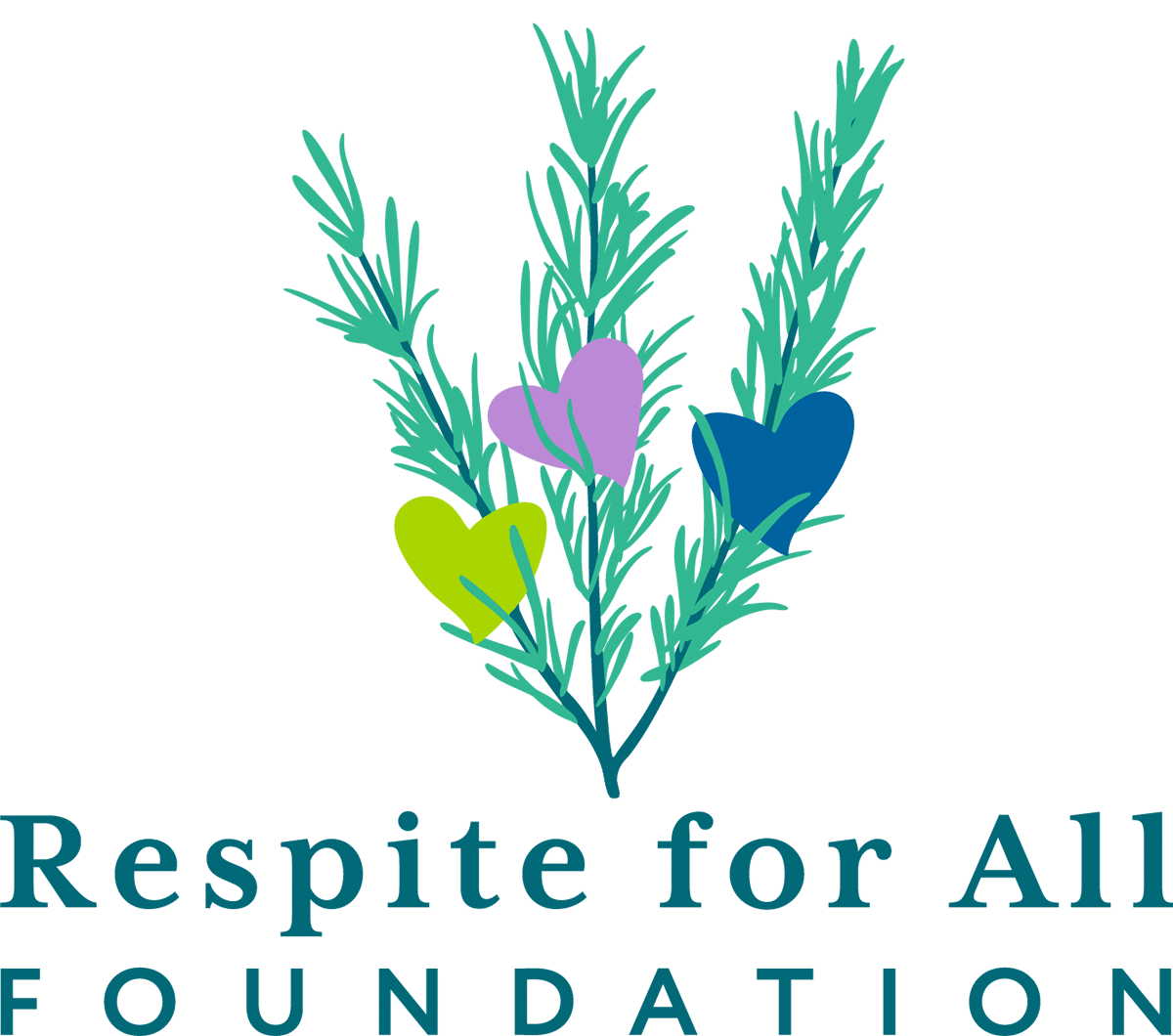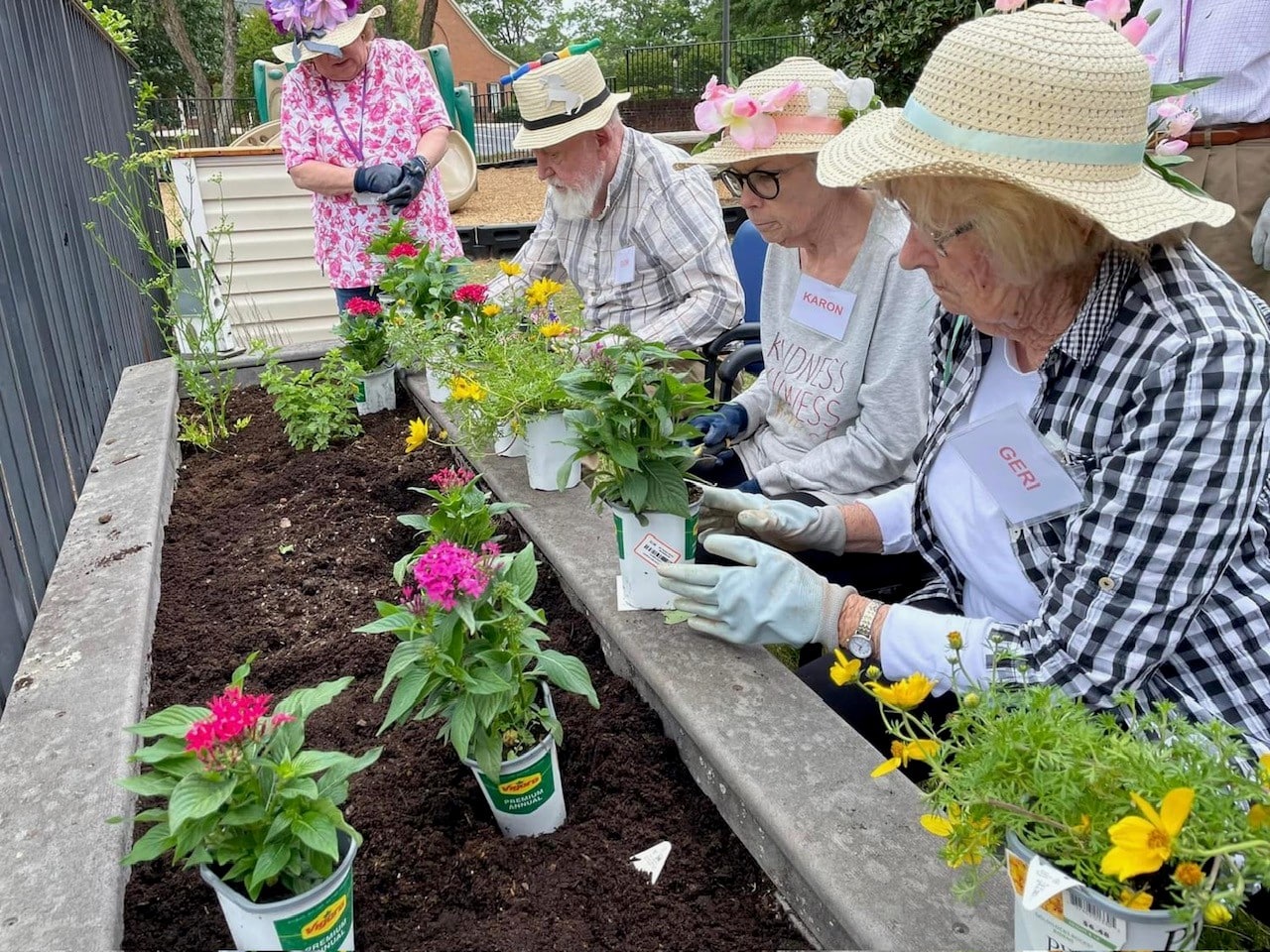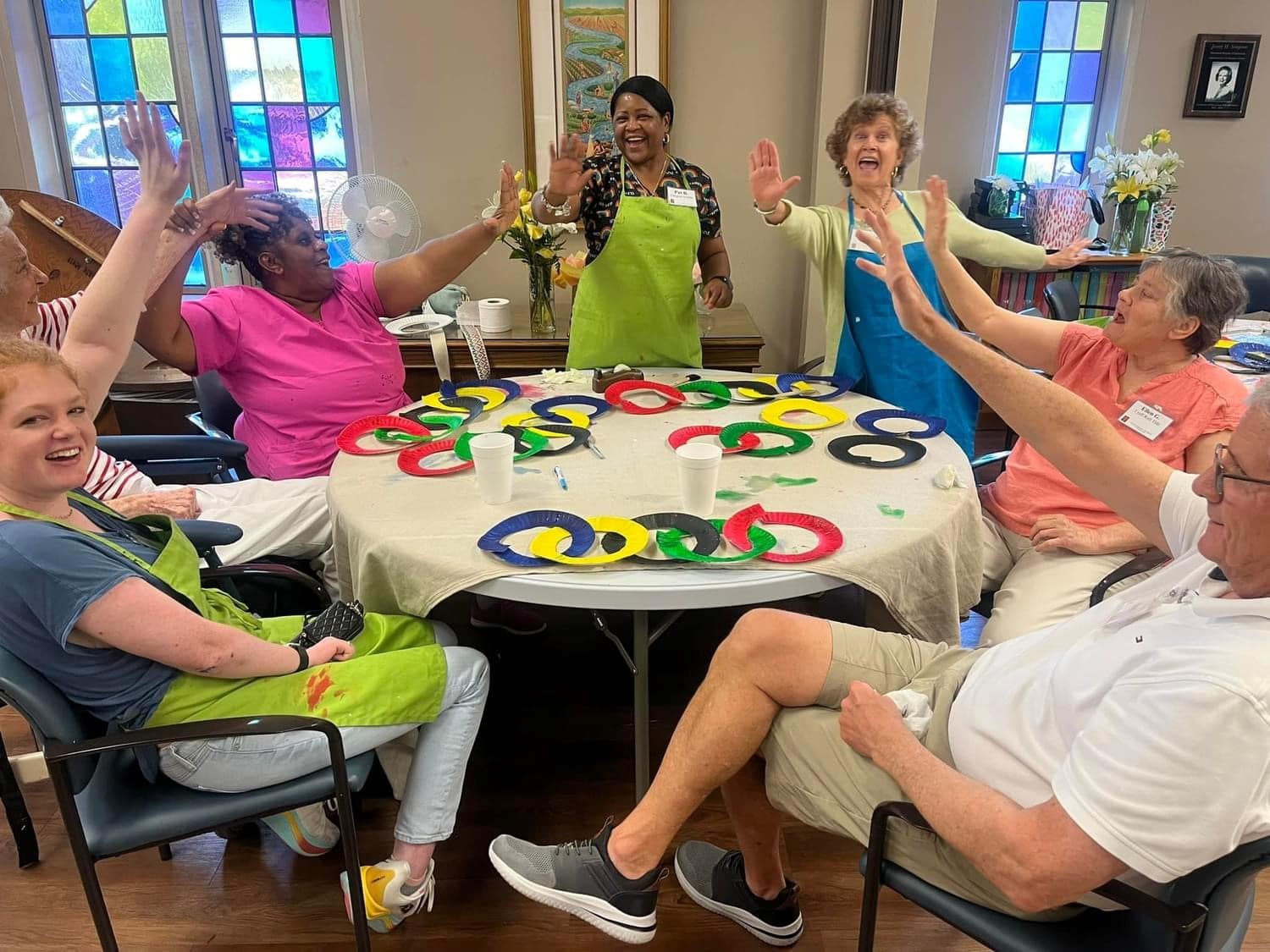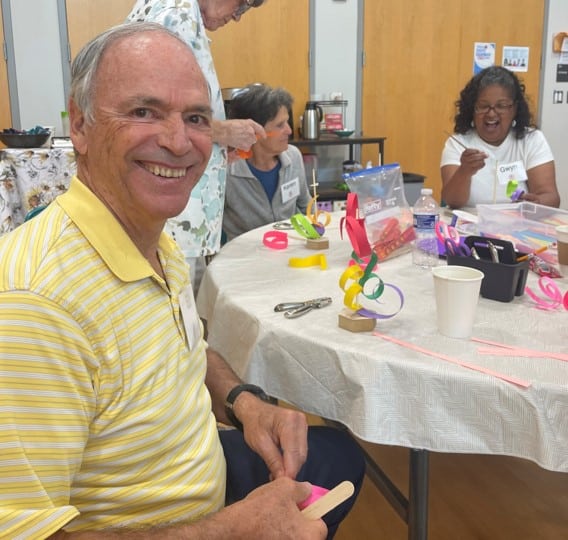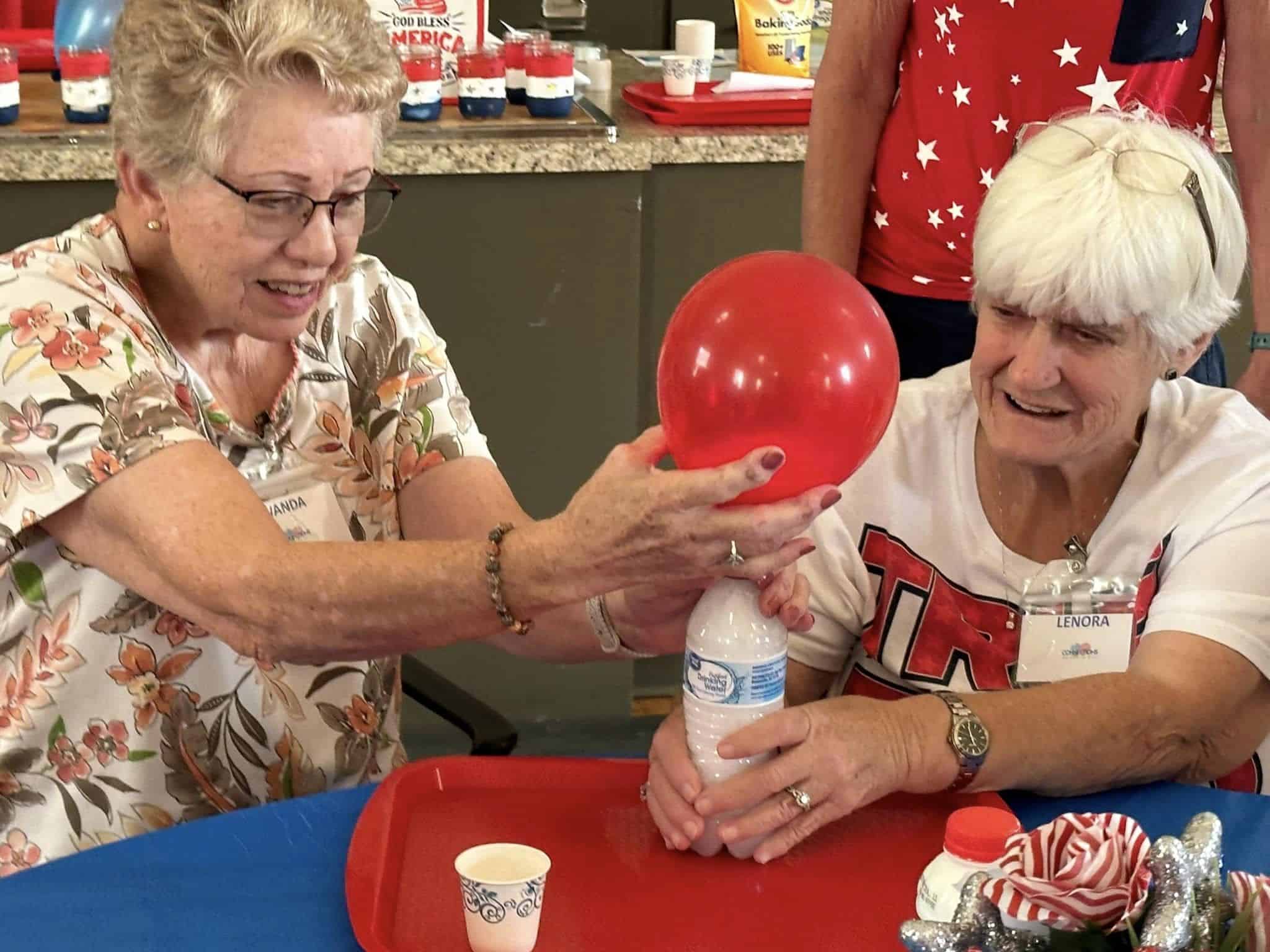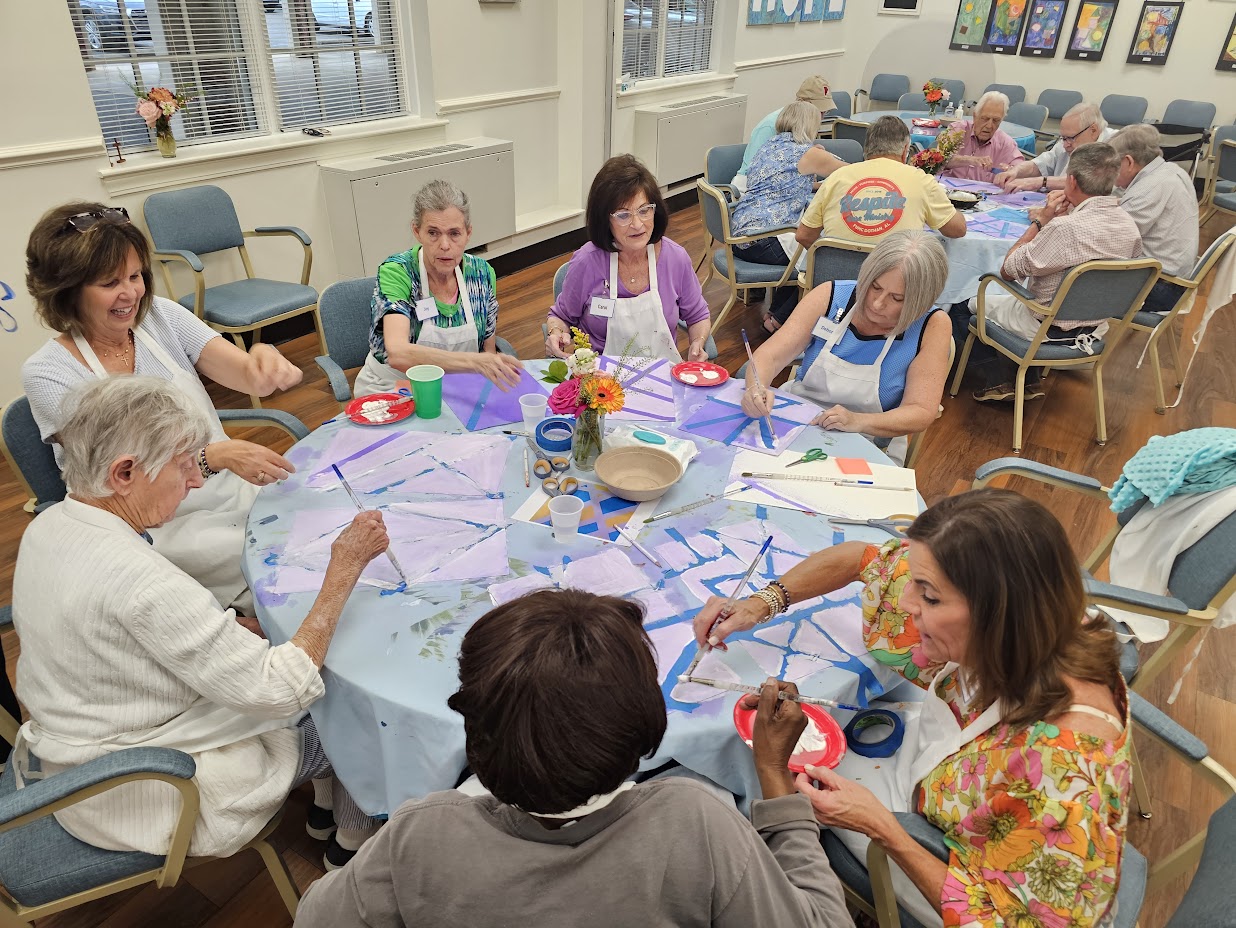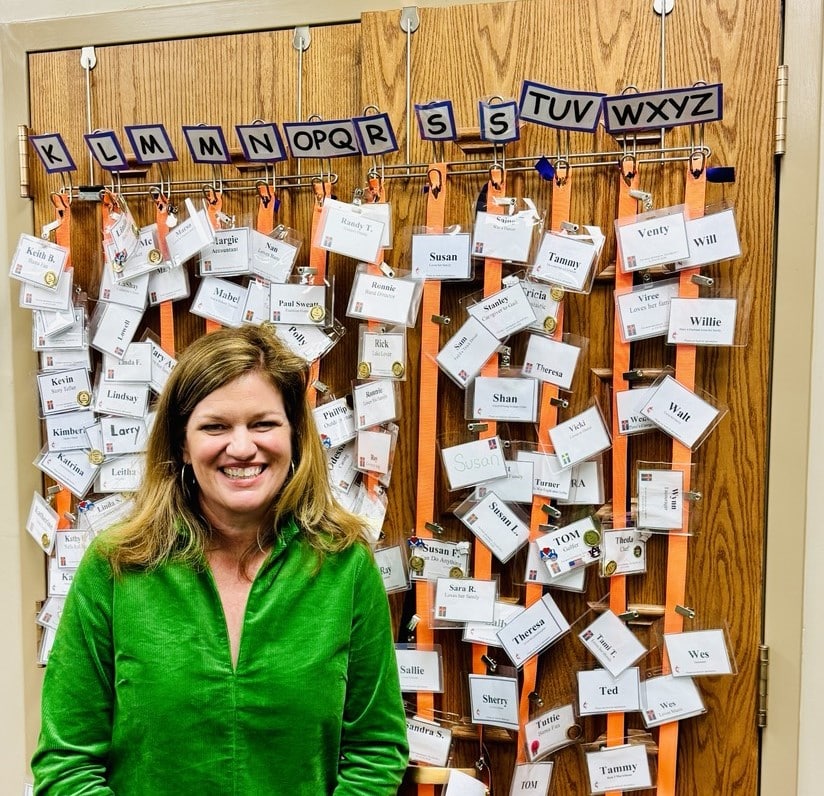A Social Model of Care
What Is a Social Model of Care?
As healthcare providers and researchers pursue much-needed solutions in the medical realm, Respite for All’s social model of care offers an immediate solution to the isolation following a diagnosis.
Millions of individuals are living with dementia in communities across the country, yet because these are progressive illnesses, individuals can benefit significantly from opportunities to stay active and engaged in their communities for as long as they can. They don’t always need medical attention, but they do always need friendship.
Healing in Community
Our Respite for All volunteers leave the medical science to the professionals. Instead, they are trained in a social model of care that creates a place for friends to be friends and for neighbors to be neighbors.
A social respite is just like it sounds: it’s a social time for individuals living with Alzheimer’s disease. The healing that comes through this model comes from being in community with others.
The Benefits of Gathering Together
Sadly, a sense of community is a deeply felt loss when individuals navigate these challenges alone. Yet by gathering together for four hours on weekdays to enjoy games, art, music, exercise and fellowship, the rewards our friends reap are immense in cognitive stimulation, physical activity and relational aspects of people spending time in community.
The Respite for All Foundation is committed to supporting a new way forward for caring for individuals living with dementia. For these illnesses that often progress over many years, the RFA model enables churches and organizations to step in during the early to middle stages and help families navigate their changing circumstances by providing a social model of care.
A Social Response to Dementia Care
No medical staff is required for this respite social model because no medical care is provided, and no medications are given during the 4-hour Respite day. These are volunteer-staffed ministries for individuals living in the early to middle stages of a diagnosis who:
- Are able to care for their own restroom needs
- Are comfortable in a large group setting.
- Are able to eat on their own
- Ambulation requirements, along with paid care attendants, are decided by local communities.
While social respite ministry doesn’t provide a cure, it does provide relationship, hope and healing.
The Term “Social Model”
The term “social model” has been in use at least since the 1970s and 1980s when individuals committed to disability rights identified a concept called Social Model of Disability to distinguish community solutions from the healthcare the Medical Model of Disability addressed. Again, while medical care dealt with medical conditions, the social model of disability sought to bring attention to the physical structures of our societies—for example, improving access to restrooms, doors, elevators, walkways, etc. to better enable individuals living with disability to fully participate in our communities. These concepts also addressed use of language that were medical in nature, such as “wheelchair-bound” and other deficit-based concepts.
Restoring Community
While the Respite for All social model doesn’t address physical structures, it does seek to open doors of community and relationship that help reintegrate our friends living with dementia back into their communities. Not surprisingly, we also take care in the language we use. For example, instead of referring to participants or illness, we tend to refer to people in our communities as our “friends.” In addition, we believe in a label-free environment. Our name tags are all the same for everyone so that we don’t distinguish our friends from our volunteers. As we like to say, everybody is living with something. Why single out a dementia diagnosis?
